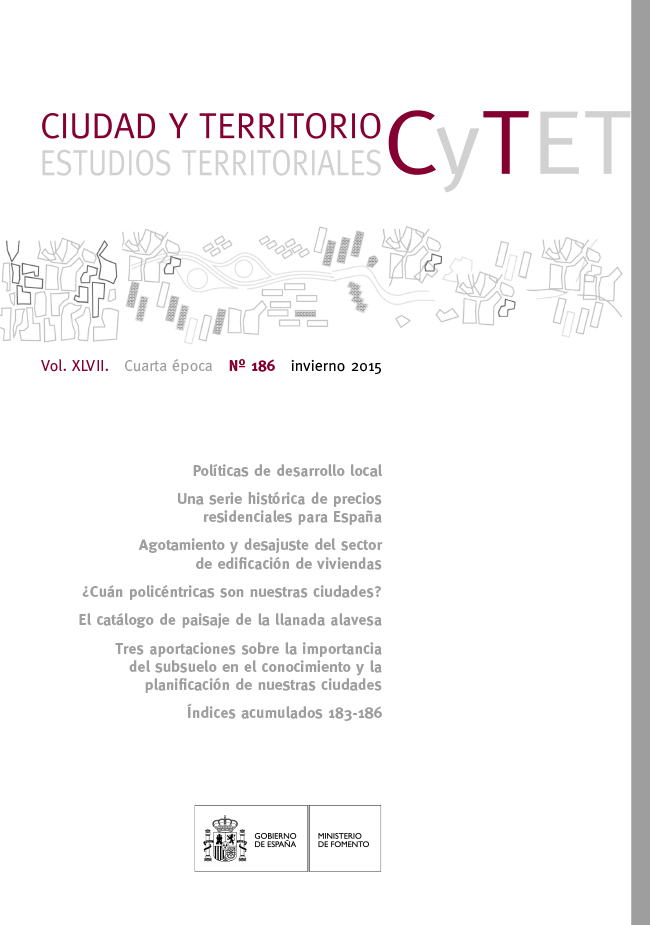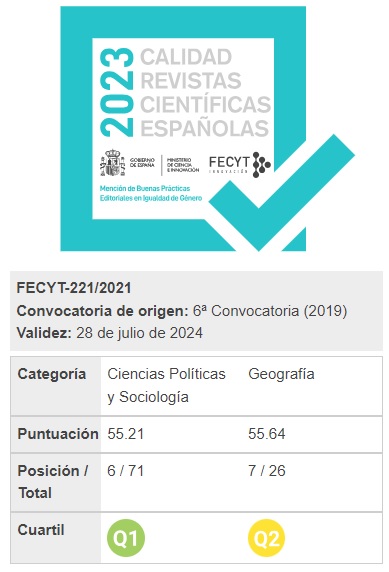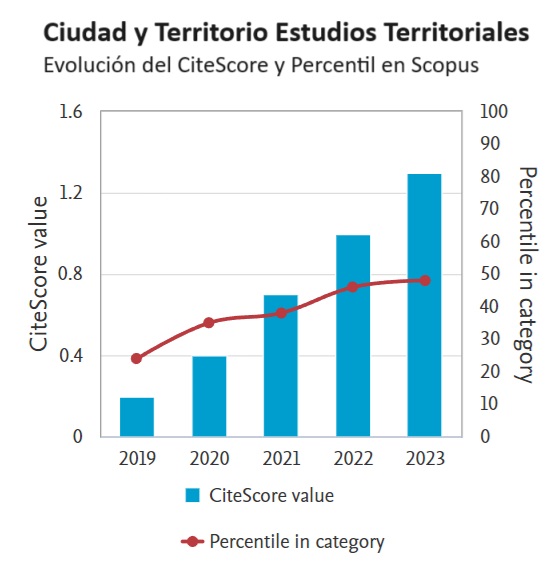How Polycentric Are our Cities? An Analysis for Spain’s Seven Large Metropolitan Areas
Keywords:
Polycentrism, new urban economy, metropolitan structure, Spanish Urban SystemsAbstract
In Spain the debate about urban structure has mostly focused on the study of la
polynucleation, i.e., on identifying subcentres, characterising them demographically and
economically, and studying their influence on their environment. However, scant attention has been
paid to something that would appear to be fundamental for the study of contemporary metropolitan
areas: analysis of the interconnections between subcentres. In this paper we use the indicator of
polycentricity proposed by Green, applying data on labour mobility to analyse the functioning of
Spain’s main metropolitan areas as a network. Based on this indicator and those obtained from
previous research on polynucleation, we attempt to bring them together to set the basis for an
integrated polycentrism measure. The results suggest that the greater the degree of polynucleation,
the greater the level of polycentricity will be, except for Málaga, which is more polynucleated than
non-polycentric in functional terms. We also highlight that relevant orbital links (subcentre to
subcentre) are currently a rarity, found in areas such as Bilbao and, particularly, Barcelona. The
regression models analysed to reveal the factors that underlie the level of interlinking between
areas bring to the fore the important role in mobility that is played by the lack coordination in urban
development to provide housing and employment in accordance with people’s socio-professional
profiles.
Downloads
Downloads
Published
How to Cite
Issue
Section
License
Copyright (c) 2015 Carlos Marmolejo Duarte, Nancy Ruiz Estupiñán, Moira Tornés Fernández

This work is licensed under a Creative Commons Attribution-NonCommercial-NoDerivatives 4.0 International License.
Considering the provisions of the current legislation on Intellectual Property, and in accordance with them, all authors publishing in CyTET give -in a non-exclusive way and without time limit- to the Ministry of Transport, Mobility and Urban Agenda the rights to disseminate, reproduce, communicate and distribute in any current or future format, on paper or electronic, the original or derived version of their work under a Creative Commons Attribution-NonCommercial-NoDerivative 4.0 license International (CC BY-NC-ND 4.0), as well as to include or assign to third parties the inclusion of its content in national and international indexes, repositories and databases, with reference and recognition in any case of its authorship.
In addition, when sending the work, the author(s) declares that it is an original work in which the sources that have been used are recognized, committing to respect the scientific evidence, to no longer modify the original data and to verify or refute its hypothesis. Author(s) also declare that the essential content of the work has not been previously published nor will it be published in any other publication while it is under evaluation by CyTET; and that it has not been simultaneously sent to another journal.
Authors must sign a Transfer of Rights Form, which will be sent to them from the CyTET Secretariat once the article is accepted for publication.
With the aim of promoting the dissemination of knowledge, CyTET joins the Open Journal Access (OA) movement and delivers all of its content to various national and international indexes, repositories and databases under this protocol; therefore, the submission of a work to be published in the journal presupposes the explicit acceptance by the author of this distribution method.
Authors are encouraged to reproduce and host their work published in CyTET in institutional repositories, web pages, etc. with the intention of contributing to the improvement of the transfer of knowledge and the citation of said works.








 Enlace a CyTET en Linkedin
Enlace a CyTET en Linkedin